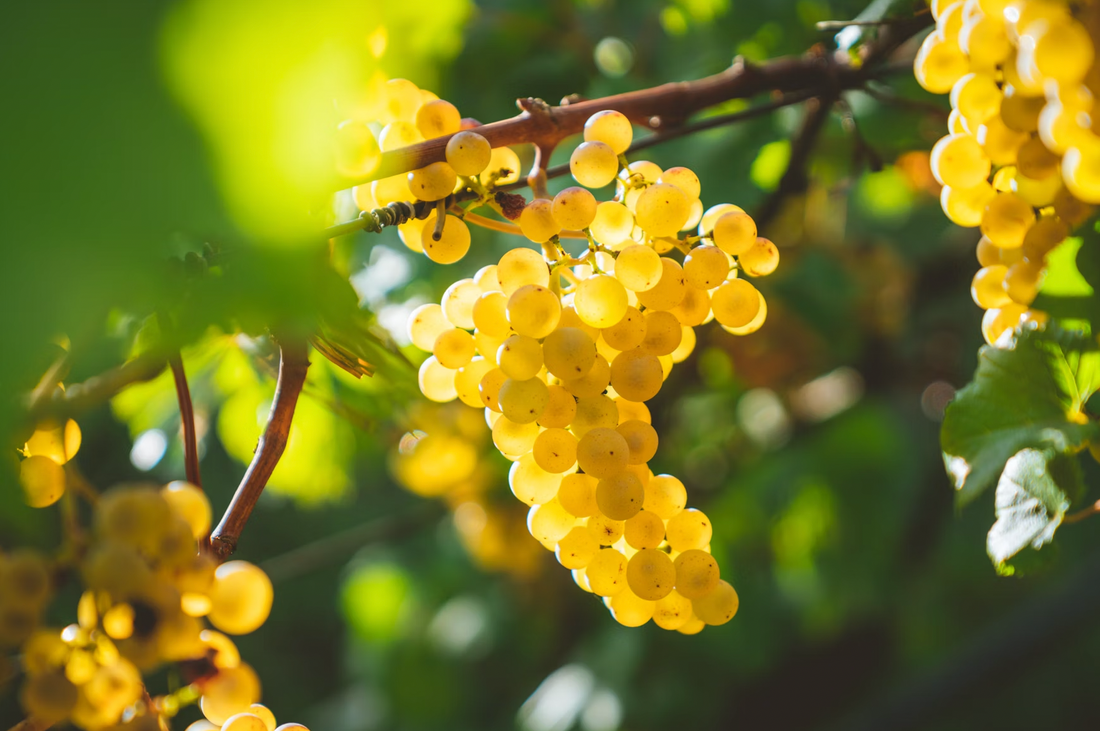Chardonnay is more than just a popular white wine, it’s a shape-shifter, a storyteller, and a staple in cellars around the world. From the chalky vineyards of Burgundy to the sun-drenched hills of California, Chardonnay has earned its reputation as one of the most versatile and expressive grape varieties. But how did it rise to global fame, and why does it taste so different from one bottle to the next?
In this post, we’ll uncork the rich history of Chardonnay, trace its journey across continents, and explore the many styles, from crisp and mineral-driven to bold and buttery, that make this grape both beloved and endlessly debated. Whether you're a longtime fan or just starting your wine journey, this deep dive will give you a fresh appreciation for the world’s most adaptable white wine.
The Basics
Chardonnay is the fifth most widely planted grape in the world and the second most planted white grape behind Spain’s Airén. The name comes from the French word chardon meaning “thistle,” and like the hardy plant, Chardonnay thrives across a wide range of climates and soils.
This adaptability makes it one of the most versatile white grapes in the world. Winemakers can craft it in drastically different styles:
- Stainless steel fermentation creates a clean, fresh wine, highlighting citrus and orchard fruits.
- Oak barrel fermentation and aging adds richness, creamy textures, and notes of butter, vanilla, and toast.
Chardonnay is also unusual among white grapes because it ages gracefully in oak—a technique often reserved for reds.
Wine labels reflect these stylistic differences depending on where the wine comes from. In France, the grape’s name is rarely seen on labels. Instead, you’ll see the appellation: Chablis, Puligny-Montrachet, or Meursault. White wines made from Chardonnay in Burgundy are collectively called White Burgundy. By contrast, regions like the U.S. and Australia proudly feature “Chardonnay” front and center on their bottles.
History
Chardonnay is a natural cross between Pinot Noir and Gouais Blanc, an ancient grape with roots in Croatia that was brought to France by the Romans. This discovering only happened in the late 20th century by University of California - Davis, when they ran DNA testing on the grape.
Early references to Chardonnay date back to the 1600s in Burgundy. The Cistercian monks were instrumental in spreading the grape throughout the region, carefully mapping vineyards and observing how different soils shaped flavor. For centuries, Chardonnay was mistaken for Pinot Blanc, until ampelographers (grape scientists) clarified its identity in the late 18th century.
Chardonnay’s global breakthrough came with the 1976 Judgment of Paris, a blind tasting where California Chardonnays triumphed over top Burgundian examples, shocking the wine world. This single event propelled California into the spotlight and cemented Chardonnay as an international star.
By the late 1980s, California’s Chardonnay plantings surpassed those of Burgundy. Today, California alone cultivates over 90,000 acres, contributing to the grape’s 520,000+ total acres planted worldwide.
France: Burgundy
In its homeland, Chardonnay expresses a lean, elegant, and mineral-driven profile, often with crisp acidity and subtle fruit notes like green apple, pear, and citrus. Burgundy’s cooler climate limits ripeness, creating wines with precision and finesse.
Food pairings: fish, shellfish, poultry, creamy pasta, and mild cheeses.
Key regions include:
- Chablis (northern Burgundy) - famed for its piercing acidity and flinty aroma
- Côte de Beaune villages like Puligny-Montrachet and Meursault - known for richer, more structured Chardonnays.
Burgundy also sets the benchmark for quality classification:
- Grand Cru: the top vineyards, known for power, depth, and aging potential.
- Premier Cru: vineyards just below Grand Cru, offering exceptional wines at a slightly more accessible price point.
California
The U.S. is the second-largest producer of Chardonnay, with California leading the charge. Sonoma, Napa Valley, and the Central Coast (Santa Barbara, Monterey) are home to some of the most renowned bottles.
California Chardonnay is often richer and more fruit-forward than Burgundy, with notes of tropical fruit, baked apple, vanilla, and butterscotch. These flavors reflect both the region’s warmer climate and winemaking techniques such as oak aging and malolactic fermentation, a process that softens acidity and creates creamy, buttery textures.
Food pairings: salmon, lobster, crab cakes, roast chicken, veal, corn-based dishes, buttered popcorn, and creamy dips like guacamole.
Australia
Australia accounts for about 10% of the world’s Chardonnay plantings, with the grape rising to popularity in the late 1970s. It is now the country’s second most planted variety, after Shiraz (Syrah).
Australian Chardonnay spans a wide stylistic range:
- Warm regions produce bold, ripe, tropical styles with mango, pineapple, and toasty oak.
- Cool-climate regions like Margaret River, Yarra Valley, and Adelaide Hills craft more refined, Burgundian-inspired wines with citrus, stone fruit, and vibrant acidity.
Over the past decade, Australia has shifted away from the heavy, buttery styles of the 1980s and ’90s toward fresher, more balanced expressions. Margaret River Chardonnays, in particular, are now considered world-class.
Summary
Chardonnay’s chameleon-like nature is both its strength and its controversy. Whether you’re drawn to a zesty Chablis, a creamy California classic, or a tropical Australian bottling, there’s a Chardonnay style for every palate.
This week, consider a side-by-side tasting from two regions, you might be surprised how much the same grape can differ depending on its origin and the winemaker's touch! That’s the magic of Chardonnay: endlessly familiar, yet never quite the same.

